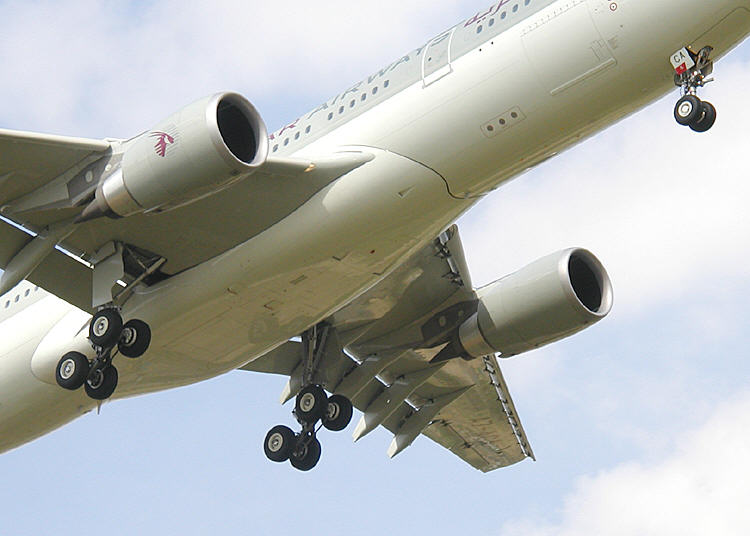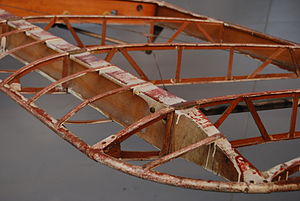English learning advice from Aviation English Asia. Article written by Michael Egerton
In a previous article, Describing pictures in ICAO Aviation English tests we learned some techniques to describe pictures. One of the lexical sets we said was necessary was vocabulary to describe an aircraft. In this article we will focus on how to describe the physical structure of a fixed wing aircraft, and also cover some grammatical structures you can use to relate the information. Of course many pilots will already be familiar with these words but it is worth ensuring that you can use the words with correct grammar, eg prepositions.
Most aircraft have the following major components.
- fuselage
- wings
- empennage
- landing gear
- power plant
Describing the fuselage and substructure
The fuselage is the central structure of an aircraft and includes the cabin, cockpit and area for storing cargo. When describing the fuselage also consider the materials it is made of, and how it is constructed. You should also know the following vocabulary:
truss, longeron, members, tubing, cross-brace, monococque, aluminium, skin, formers, bulkheads, airframe
Structure: You can also use the following verbs to describe the fuselage. Be aware of the form of the verb eg feature / features, and also if there are any necessary prepositions that go with the verb.
- The truss-type fuselage is constructed of steel or aluminum tubing.
- The Warren truss features longerons, as well as diagonal and vertical web members
- Small airplanes generally utilize aluminum alloy tubing
- A monocoque design uses stressed skin to support almost all imposed loads
- The monocoque construction mainly consists of the skin, formers, and bulkheads.
- The substructure reinforces the stressed skin by taking some of the bending stress from the fuselage.
- On single-engine aircraft, the engine is usually attached to the front of the fuselage
- A firewall is made of heat-resistant material such as stainless steel.
Describing the wings
Wings are attached at either the top, middle, or lower part of the fuselage and are referred to as high-wing, mid-wing or low-wing.
You should know the following vocabulary:
bi-plane, mono-plane, external braces / wing struts, cantilever, semi-cantilever, spar, ribs, aileron, stringers, ailerons, wing flaps, trusses, I-beams, leading edge, trailing edge, fuel tanks, faring, airfoil/aerofoil, flush, port, starboard, inboard, outboard
Structure: In addition to being able to identify the above parts of an aircraft, you should be able to describe it's function. You can use the following structures:
- wing struts transmit the flight and landing loads through the struts to the main fuselage structure
- wing ribs determine the shape and thickness of the wing
- ailerons create aerodynamic forces that cause the aircraft to roll
- flaps are used to increase the lifting force of the wing for takeoff and landing
- The flaps are normally flush with the wing´s surface during cruising flight
Describing the tail-section (empennage)
The empennage includes the entire tail section, consisting of the vertical and horizontal stabiliser. Basic vocabulary to describe the tail section includes:
rudder, elevator, stabilator, trim tabs, antiservo , tail fin, inclining, forward swept/sweeping, livery, vertical, horizontal, leading edge, trailing edge,
Exercise: Describe the following picture using 5 of the words above.

Describing the landing gear
Aircraft can have different types of landing gear eg wheels, skis or floats depending on whether the aircraft is used on land, water or snow. When describing landing gear consider what that particular type of landing gear is designed for. Essential vocabulary includes:
nose wheel, tail wheel, tyres, tricycle, floats, skis, undercarriage, fixed gear, retractable, extending, wheel well, shock absorbers, pontoons, skid, conventional "taildragger", tail strike, skid, tail bumper, spats, axle, wheel assembly, tracks, pivoting, steering,
Exercise: Describe the following pictures using 5 of the words listed above.


Advice for describing aircraft in ICAO English tests
There is a lot of vocabulary listed in this article, some of which you may already be familiar with - but learning English is not just a matter of remembering vocabulary. In order to communicate effectively in English you must be able to use vocabulary with reasonably accurate grammar. Try to create sentences using the structures presented above, or compare pictures of different types of aircraft. There are a lot of interesting pictures on websites such as airliners.net that you can practice describing.
What to do next For feedback and more information about Aviation English Asia’s courses please visit http://aviationenglish.com. We can help you improve your English whether you are an experienced pilot, a cadet entry pilot, a controller, aerospace engineer or flight attendant, with custom courses designed specifically for your needs. If you haven’t already please join the Aviation English mailing list for special offers and details of courses in your area. Of course, feel free to leave a comment or even a suggestion for a future article. We value all of your feedback.


.jpg)